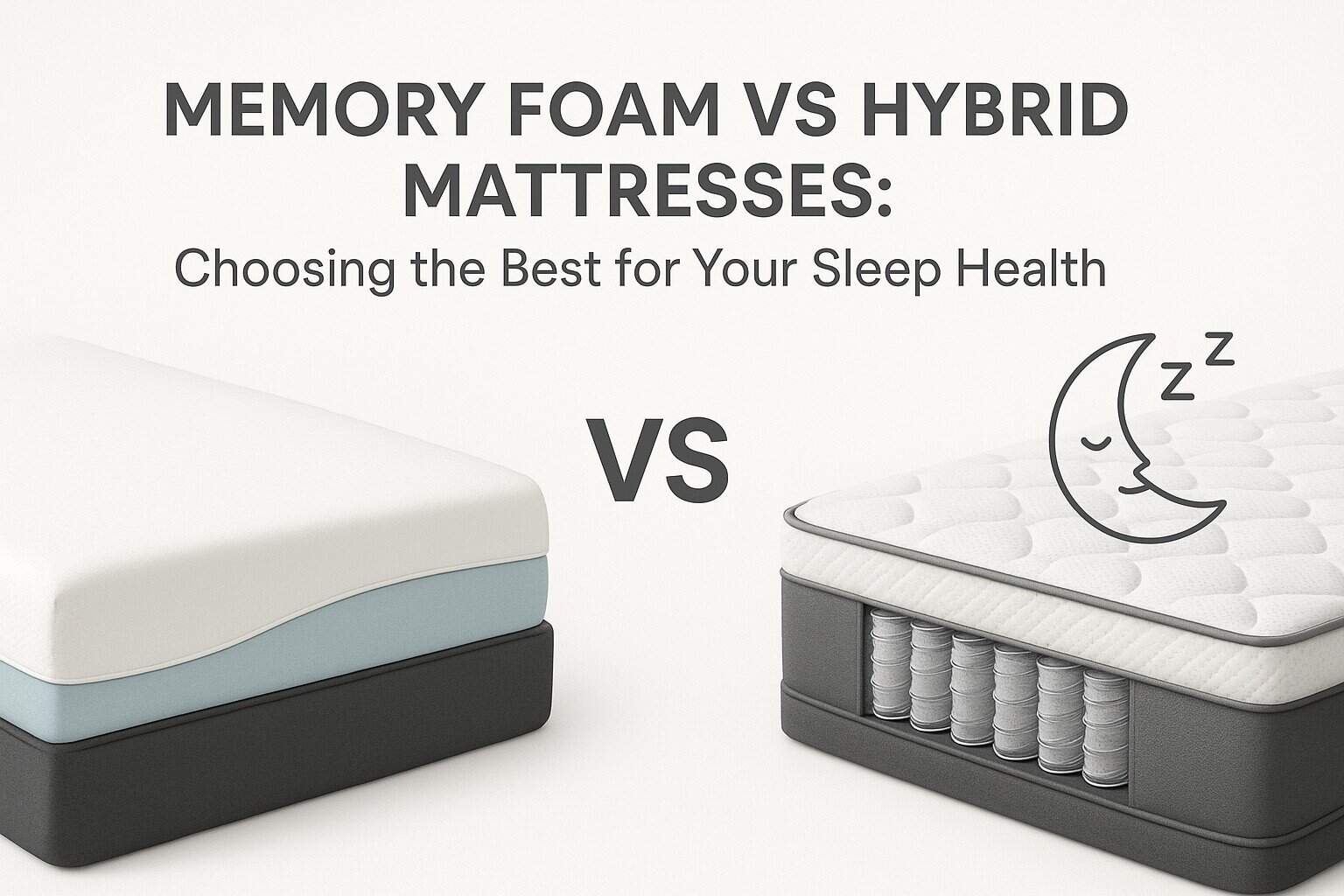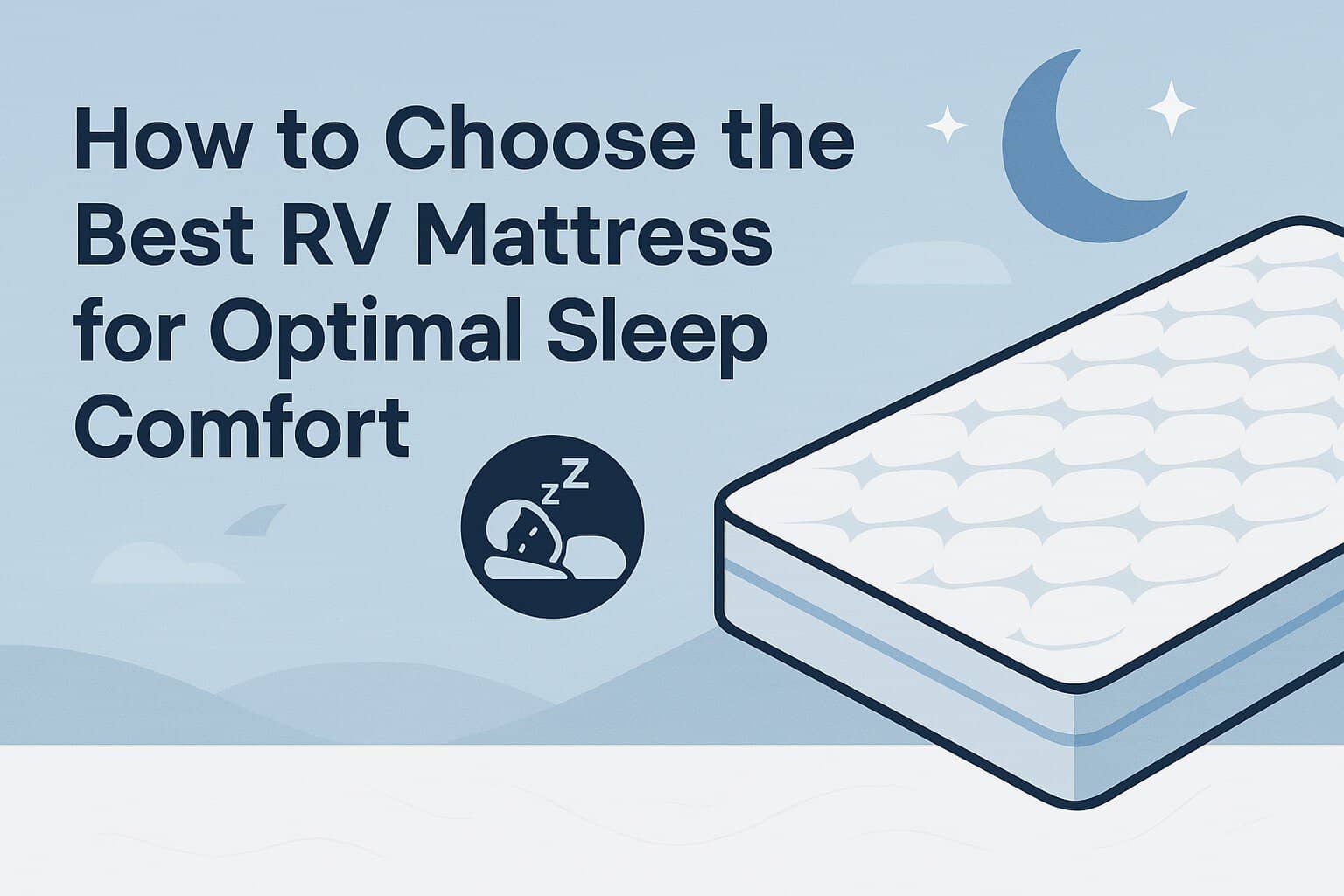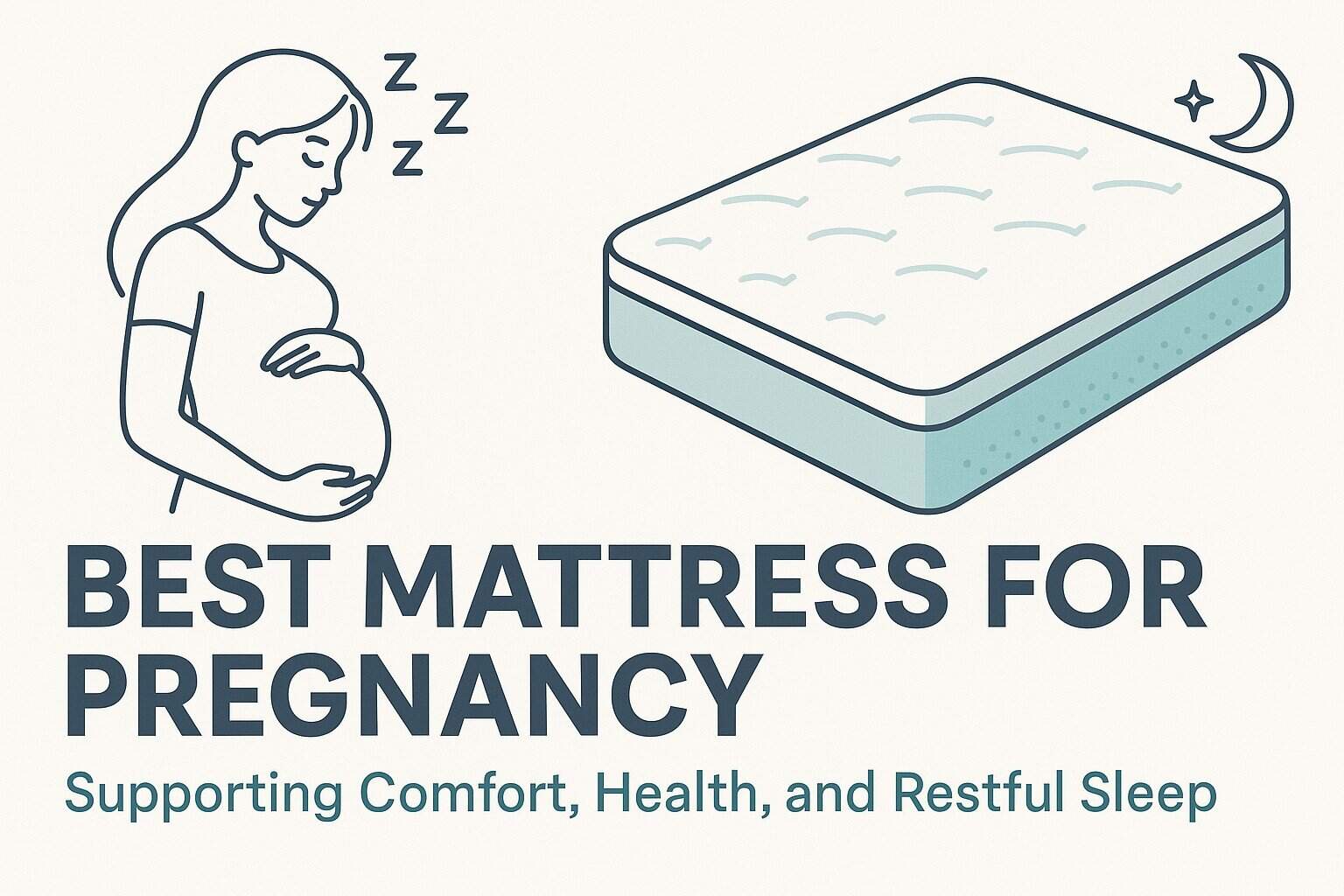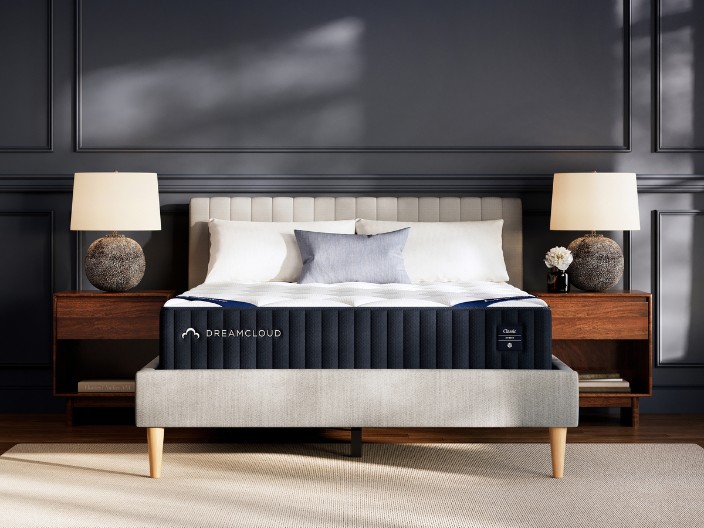Best Mattresses for Arthritis: Scientific Insights and Practical Guidance
Share
Fact checked
Reviewed by experts
Updated
October 27, 2025
Quick read
6 mins to read
List of Content
Those who suffer from it know that arthritis and joint pain can significantly disrupt sleep quality, which makes mattress selection a critical factor when managing your discomfort night after night. The best mattress for arthritis or joint pain should provide not only pressure relief, but also adequate support to reduce inflammation-triggered discomfort. This article will explore how mattress construction and materials can influence joint health, backed by research, and explain key considerations that will help you choose a mattress that supports restorative sleep despite arthritis.
Why Mattress Choice Matters for Arthritis and Joint Pain
Arthritis, a group of conditions characterized by joint inflammation and pain, affects an estimated 54 million adults in the United States alone according to the Centers for Disease Control and Prevention (CDC). Symptoms such as stiffness, swelling, and tenderness can worsen after prolonged periods of inactivity, including during sleep. In fact, poor sleep can create a vicious cycle for those suffering from arthritis by impairing healing and increasing sensitivity to pain.
Research suggests that mattress factors like firmness, material composition, and pressure distribution can play pivotal roles in either alleviating or exacerbating joint discomfort. More supportive and pressure-relieving surfaces reduce focal joint stress and promote better sleep quality, which is essential for managing arthritis symptoms effectively [Study: Journal of Clinical Sleep Medicine, 2024]. Therefore, understanding how different mattresses interact with your body and joints can empower you to make an informed purchase that contributes to pain reduction and improved well-being.
How Arthritis Affects Sleep Comfort and Support Needs
Arthritis-related joint pain can make falling asleep and staying asleep a challenge. Joints commonly affected — such as the knees, hips, and shoulders — are also among the body’s main pressure points during sleep. When a mattress does not adequately cushion or support these areas, pressure accumulation leads to microdiscomfort and disrupted sleep cycles.
Moreover, inflammation may change the way joints respond to mechanical stress, causing hypersensitivity to pressure. This means that what feels comfortable for someone without arthritis might feel too firm or uneven for those with joint pain. These altered needs highlight the importance of selecting a mattress that offers precise pressure redistribution and stable support to diminish joint strain during sleep.
Mattress Firmness and Its Impact on Arthritis Pain
Firmness refers to how soft or hard a mattress feels and influences how much the body sinks into it. Choosing the optimal firmness balance, commonly a medium to medium-firm range, can reduce joint pain by distributing body weight evenly, preventing excessive pressure on sensitive joints while maintaining healthy spinal alignment.
A 2024 study published in the Journal of Orthopaedic & Sports Physical Therapy found that a medium-firm mattress was associated with reduced joint pain and improved sleep quality in adults with chronic musculoskeletal conditions. The firmness level prevented the sensation of “bottoming out,” where the mattress compresses excessively under heavier parts of the body, which can exacerbate pain in hips and shoulders.
That said, individual preference and body weight influence firmness needs. People with lower body weight often require softer mattresses to achieve sufficient contouring, while those with higher body weight benefit from firmer mattresses to obtain adequate support. Therefore, it is advisable to try different mattresses to find a balanced medium feel that neither feels too hard nor excessively soft.
Pressure Relief Through Mattress Materials
Pressure relief describes how a mattress alleviates concentrated force on your joints, minimizing pain and increasing circulation. Certain mattress materials excel at this, while others provide more responsive support without excessive sinkage. The choice of materials is particularly important for arthritis sufferers who require both cushioning and stability.
Memory Foam and Pressure Redistribution
Memory foam — known for its viscoelastic properties — softens with body heat and weight, conforming closely to the sleeper’s unique shape. This contouring effect helps evenly distribute pressure across larger surfaces, reducing the load on inflamed joints such as knees, hips, and shoulders. Studies indicate that memory foam mattresses can reduce pressure points and improve pain symptoms in individuals with arthritic conditions [Study: Clinical Rheumatology, 2023].
Gel-infused memory foam layers further address common concerns about heat retention, improving breathability and sleep temperature regulation. For example, memory foam designs like those found in Nectar mattresses use specialized layering, including gel-infused foams, to combine pressure relief with cooling properties, making them suitable for sensitive skin and joint conditions aggravated by heat or sweating.
Latex Foam and Responsive Support
Natural latex foam exhibits a different feel when compared to memory foam; it is more buoyant and responsive rather than heavily contouring. This responsiveness allows some targeted pressure relief while maintaining greater surface support and spinal alignment. Latex also tends to have natural temperature regulation and hypoallergenic properties, important features for those with joint inflammation and skin sensitivities.
Certified organic latex mattresses—such as those by Awara—feature layers of Dunlop latex. This material distributes weight effectively and responds quickly to movement, reducing pressure on joints without sacrificing stability. Additionally, organic certifications ensure fewer chemical irritants that might exacerbate inflammation or sensitivity.
Hybrid Mattresses: Combining the Benefits of Foam and Coils
Hybrid mattresses blend foam layers with innerspring coils to balance pressure relief and support. Innerspring coils provide responsive support and improved edge stability, while foam comfort layers contour to pressure points. Luxury hybrid mattresses, like those from DreamCloud, include individually-wrapped coils beneath memory foam layers, which enhance spinal alignment while reducing motion transfer—a valuable attribute if joint pain leads to frequent nighttime awakenings.
Research underscores that hybrids can effectively reduce pressure and maintain proper alignment for people with musculoskeletal pain, as the coil system prevents excessive sinkage that could misalign the spine or joints [Study: Applied Ergonomics, 2022]. This combination also benefits sleepers who prefer some bounce and ease in repositioning during the night, which may reduce stiffness upon waking.
Temperature Regulation and Joint Pain Management
Joint inflammation can increase local heat and tenderness, making temperature regulation a relevant factor in mattress comfort. Memory foam is traditionally known for heat retention; however, many modern mattresses incorporate cooling technologies such as gel infusions, phase change materials, or breathable coils to help maintain a comfortable sleeping temperature.
Mattresses using organic fibers — cotton and wool, for example found in Awara’s design — can enhance moisture-wicking and thermoregulation naturally. This reduces night sweats and heat buildup, which some research indicates may improve inflammatory pain symptoms during sleep [Study: Inflammation Research, 2021].
Edge Support and Sleep Position Considerations
Strong edge support prevents feeling like you might roll off the mattress and contributes to overall stability when getting in and out of bed. This feature can be particularly important for people with arthritis who may experience joint stiffness or reduced mobility, especially in the hips and knees. Hybrid designs with reinforced borders, such as DreamCloud, typically offer superior edge support compared to all-foam mattresses.
Side sleepers with arthritis often benefit the most from pressure-relieving mattresses because their weight concentrates on shoulders and hips. Mattresses that conform sufficiently to these curves can reduce nerve compression and joint pain. Back sleepers need balanced support along the spine’s natural curvature, where medium-firm mattresses with zoned support foam layers perform well to prevent lower back or hip pain. Stomach sleepers generally require a firmer surface to avoid spinal sagging that increases joint strain.
Certifications and Safety Standards for Arthritis-Friendly Mattresses
Those with chronic joint conditions may be more sensitive to chemical off-gassing or allergens found in some mattresses. Certifications such as CertiPUR-US indicate that foam cores are made without harmful flame retardants, heavy metals, or ozone-depleting substances. And while many luxury or affordable-luxury mattresses include these certification, some budget-conscious mattresses (like Sleep Authority favorite Siena Sleep) also use CertiPUR-US certified foams that ensure safe material composition at a lower price.
Natural and organic certifications like GOLS (Global Organic Latex Standard), GOTS (Global Organic Textile Standard), and FSC (Forest Stewardship Council) ensure that mattresses use responsibly sourced materials without toxic chemicals. For individuals with joint pain exacerbated by environmental sensitivities or skin irritation, these certifications signal safer and potentially therapeutic mattress choices.
How to Evaluate and Test Mattresses for Arthritis Relief
When shopping, it is crucial to test mattresses in ways that simulate your typical sleep conditions. Spending at least 10–15 minutes lying in your preferred sleep position during a trial period can help assess immediate pressure relief and support. Many mattress brands offer extended trial periods – up to 365 nights – which is essential as arthritis pain improvements may take days or weeks of consistent use to manifest.
Pay attention to how your joints feel upon waking and during the day. Your mattress should minimize pain flare-ups and stiffness rather than exacerbate them. Look for products with generous trial terms and flexible return policies, reducing risk and enabling you to find the best fit.
Summary of Mattress Features Beneficial for Arthritis and Joint Pain
The optimal mattress for managing arthritis and joint pain balances pressure relief, supportive firmness, temperature regulation, and material safety. Key features include:
- Medium to medium-firm firmness to distribute body weight evenly and prevent joint compressive stress
- Pressure-relieving comfort layers, such as memory foam or latex, that contour to body curves and reduce focal pain
- Hybrid constructions that combine foam with supportive coils to maintain spinal alignment and provide stable edges
- Cooling technologies or natural breathable materials to moderate heat and inflammatory discomfort
- Certifications ensuring non-toxic, hypoallergenic materials that reduce irritation
Key Takeaways: Choosing a Mattress for Arthritis or Joint Pain
When shopping for a mattress to relieve arthritis or joint pain, focus on the following:
First, select a mattress with medium to medium-firm firmness to optimize pressure distribution and support without causing excessive sinking or hardness. Second, prioritize pressure-relieving materials such as memory foam or organic latex, which conform to your body and reduce joint stress. Third, consider hybrid designs that combine supportive coils with contouring foam layers, as these can help maintain spinal alignment and reduce pain flare-ups. Fourth, pay attention to cooling features or natural fiber covers that help regulate temperature, which may reduce inflammation-related discomfort. Finally, look for mattresses with safety and certification labels, ensuring materials are free from harmful chemicals and allergens, contributing to overall joint and skin health.
Conclusion
Arthritis and joint pain present unique challenges for sleep quality, but mattress selection offers a tangible way to alleviate discomfort and improve rest. Scientific research highlights the importance of balanced firmness, pressure relief, and supportive construction in minimizing nighttime joint pain. While individual needs vary based on body weight, sleep position, and symptom severity, choosing a mattress with appropriate contouring foam, stable support, and temperature regulation can promote healing and reduce pain flare-ups. Incorporating certifications and trial periods further ensures safety and satisfaction. With informed decisions, restful nights despite arthritis symptoms are attainable, enhancing overall health and quality of life.
This website does not offer medical advice nor professional medical services; rather, it is provided solely for educational, informational, and/or entertainment purposes. Individuals seeking medical advice should consult a licensed physician. The information provided should not be used for diagnosis or treatment of any condition, disease, or injury. When you have a medical condition, you should always talk to licensed doctor or other certified medical professional. You should never delay seeking professional medical advice or treatment based on the contents of this website. Call 911 or immediately go to the nearest emergency room if you think you may have a medical emergency. The contents of this website are provided “as-is”, Sleep Authority and its parent, subsidiaries, affiliates, employees, contributors disclaim any warranty of the information contained herein. Please contact using contact form to report any errors, omissions, misinformation, or abuse.










